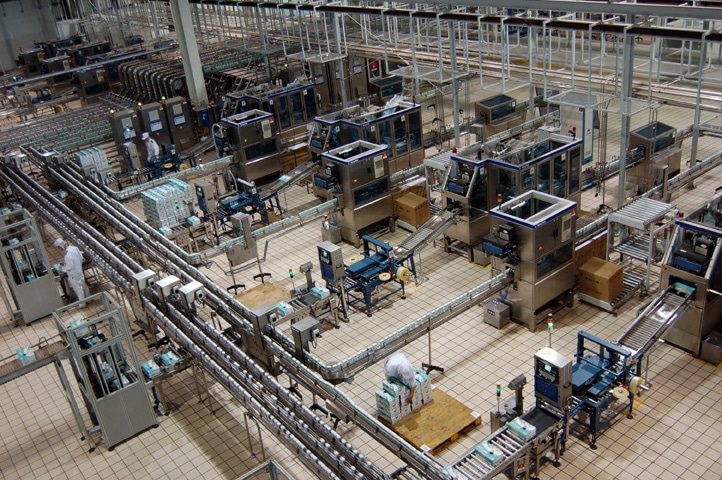Why Agile Methodology might be right for your manufacturing company
Product development and management for manufacturing companies has, historically, been a simple case of you take what you can get. Operations support technologies to maintain networks between the various working parts in the a manufacturing product making it to a customer simply was not there. Various methodologies were employed by the manufacturer in an effort to streamline processes, expedite delivery and cut loss. If a customer’s needs changed or customer order cycle was shortened, there was very little a manufacturer could do to respond. The other side of the coin is that the customer’s only real option at that point was to try to find a new manufacturer and hope that negotiating a new contract, working through design needs and getting the end product was somehow faster than just sticking with the company they had. However, technology now affords customers easier communications with a broader array of manufacturers. Luckily, manufacturers can take advantage of this same technology to create a strong network of suppliers, marketers, designers, etc. that can share data in real time and be responsive and adaptable not only to the customer, but to rapid changes in the market.
A Brief History of Agility
The Agile methodology of project management found it’s start in the software development world. This was a departure from the standard one step at a time work-flow. Instead of one long development period with one release at the end that’s hopefully close to an ideal, Agile works in short development sprints, bringing a base release to market very quickly, and then building on it in successive iterations. Customer and end user feedback is obtained at the end of these development cycles so that any change in requirements added to the plan. Any new additions of changes in what the customer requires is prioritized with the existing plan and can be tackled in a future cycle and release. The finer details of the Agile software development process are beyond the scope of this article. That is not a problem, since Agile Manufacturing has less to do with the standard Agile process, and to do with the Agile concepts and characteristics: adaptability, responsiveness and speediness. These fundamental principals shape how networks can be organized, plans can be communicated, and factories can be structured so that customer needs are met even when they change, and in the face of unexpected change Plan A is still all you need, since responding and adapting were already a major part.
Agile Manufacturing
So, what is different about manufacturing companies that apply Agile principals? Teams, factories and processes are broken down in to modular components, which can be adjusted and reorganized as needs change. A solid network of suppliers is maintained to ensure competitive costs and allow for changes in supply or customer time tables. Work output is thought of more as batches, with improvements and adjustments between them to ensure a strong place in a competitive market. Strategies from the popular Lean Manufacturing methodology are employed to keep excess inventory down and prevent waste, with added focus on rapidly meeting customer needs. In a global economy with lots of options, customers lost easily when they are told that time frames are inflexible or that a design can’t be retooled quickly enough.
Customer Order Cycle
The deciding factor for most companies comes down to the customer order cycle. How long is a customer willing to wait for a product to be delivered? Under traditional structures, with a limited network of suppliers, responding to a customer request depends heavily on supplier lead time, which can fluctuate. If a customer gets impatient, they can easily find alternatives online. Unless a primary supplier has a very short lead time to satisfy a short COC, Agile’s focus on a network of suppliers is the solution. These days, suppliers often keep inventory availability available to manufacturers, and a broad network allows them to look for the best lead time where supplies are available at the right price. The modular design focus also lends itself to variability so customers can have a working product quickly with the understanding that improvements are still forthcoming.
What is required?
As mentioned above, modularity in product and factory design is key. This allows for adaptable variation. Communication is paramount, since the backbone of this system is maintaining a communicative network with suppliers, marketers and customers. Collaboration with corporate partners helps get products out quickly whenfirst to marketis crucial. Finally, plenty of employee training investing is required so that change and adaptation is welcome. There is often a lot of loss through plain and simple stubbornness on the part of employees that don’t want to adopt a new system. This goes against what the Agile methodology is trying to achieve, and as such cannot be tolerated.
Final Thoughts
Since the 1980s, companies like Toyota have been revolutionizing the manufacturing world with optimized work flow paradigms. Loss and waste are all but eliminated through Just In Time Manufacturing and Lean Manufacturing. Agile Manufacturing is simply the next logical step. The advances in information technology have made it so inventories are view-able online and updated in real time. Customers have become accustomed to shorter waits without compromising quality or cost. Agile leverages those same advances to build upon what is already working to make a manufacturer work efficiently, and creates the adaptiveness customers demand while keeping those same concerns regarding cost and quality firmly in mind. Additionally, markets change quickly in a global economy and companies that are unable to adapt will be lost in a sort of market Darwinism. Suppliers can also suddenly fold or change focus, and a strong network offsets any impact that would negatively affect a company with a sole supplier. The biggest concern a manufacturer should have about apply Agile methodologies is why hasn’t this already been implemented?






